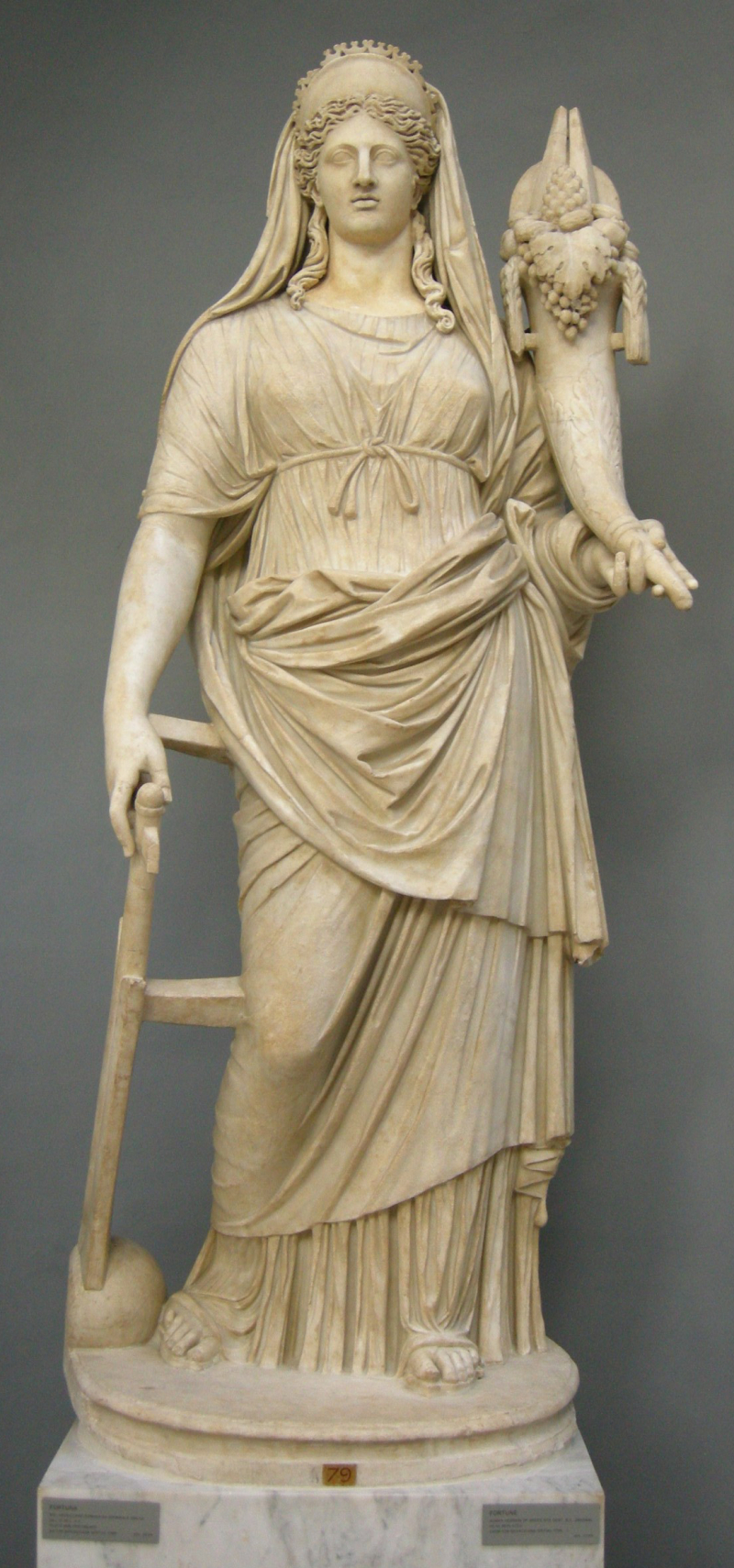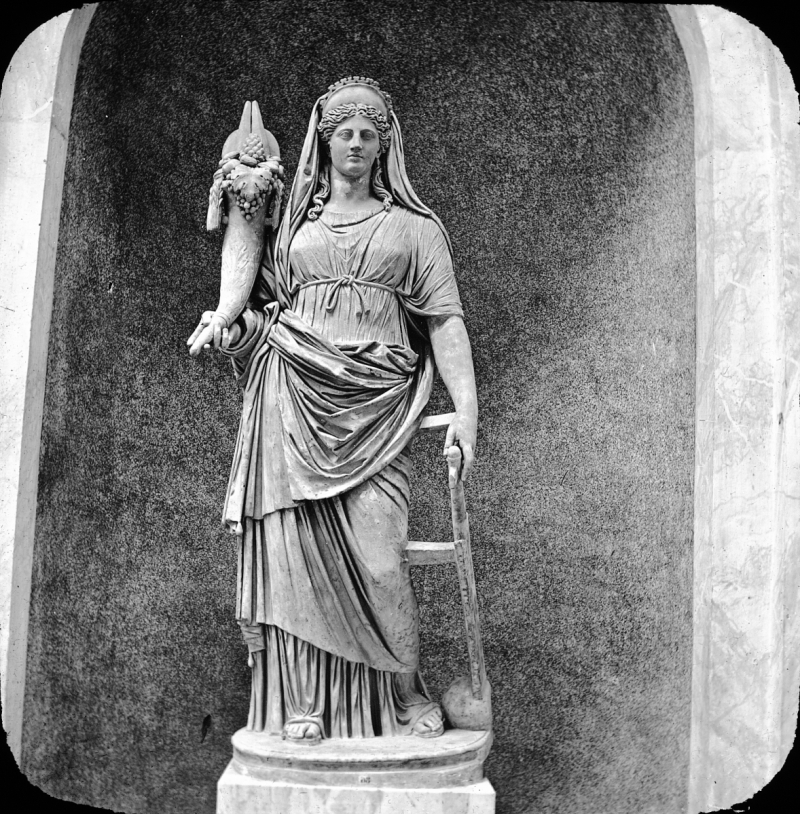Fortuna

Fortuna is the Roman goddess of fortune and the embodiment of luck who, thanks primarily to the Late Antique scholar Boethius, was popular throughout the Middle Ages and into the Renaissance. The blindfolded image of her remains a major figure in many elements of contemporary Italian society, where the dichotomy fortuna / sfortuna (luck / unluck) is evident in everyday social life.
Fortuna is frequently represented with a gubernaculum (ship's rudder), a ball or Rota Fortunae (wheel of fortune), and a cornucopia (horn of plenty). She might bring good or bad luck: she could be veiled and blind, like modern images of Lady Justice, except that Fortuna does not hold a balance. Fortuna came to signify the unpredictability of life. She was also a goddess of fate, having claimed the young lives of the princeps Augustus' grandsons Gaius and Lucius, who were to be the Empire's heirs.
The two first temples listed in Roman calendars were on the right bank of the Tiber, outside the city. The first Fortuna temple was attributed to the Etruscan Servius Tullius, while the second was built in 293 BC as the fulfillment of a Roman vow made during subsequent Etruscan battles. The dedication of her temples took place on June 24, or Midsummer's Day, when Romans would annually float to the temples downstream from the city. They rowed back, garlanded and drunk, after unknown rituals. Fortuna also had a shrine at the Forum Boarium. The cults of Fortuna and Mater Matuta were twinned here (the goddesses shared a festival on 11 June), and the paired temples have been unearthed in the excavation beside the church of Sant'Omobono: the cults are indeed archaic in date. At the end of the third century BC, Romans adopted Fortuna Primigenia of Praeneste in an important cult of Fortuna Publica Populi Romani (the Official Good Luck of the Roman People) on the Quirinalis outside the Porta Collina.













